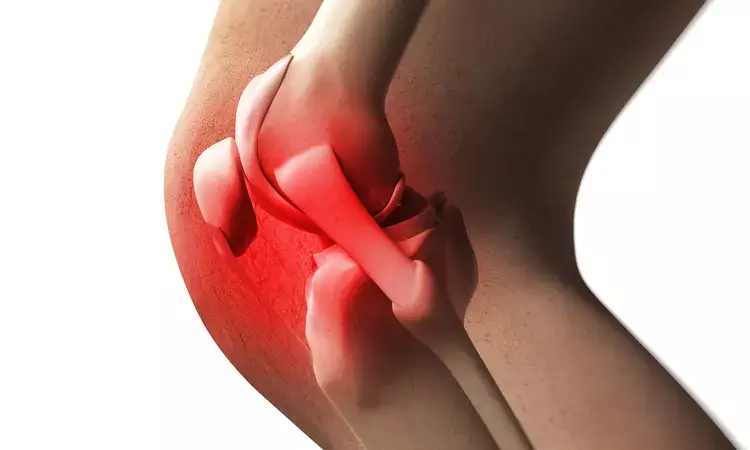- Home
- Medical news & Guidelines
- Anesthesiology
- Cardiology and CTVS
- Critical Care
- Dentistry
- Dermatology
- Diabetes and Endocrinology
- ENT
- Gastroenterology
- Medicine
- Nephrology
- Neurology
- Obstretics-Gynaecology
- Oncology
- Ophthalmology
- Orthopaedics
- Pediatrics-Neonatology
- Psychiatry
- Pulmonology
- Radiology
- Surgery
- Urology
- Laboratory Medicine
- Diet
- Nursing
- Paramedical
- Physiotherapy
- Health news
- Fact Check
- Bone Health Fact Check
- Brain Health Fact Check
- Cancer Related Fact Check
- Child Care Fact Check
- Dental and oral health fact check
- Diabetes and metabolic health fact check
- Diet and Nutrition Fact Check
- Eye and ENT Care Fact Check
- Fitness fact check
- Gut health fact check
- Heart health fact check
- Kidney health fact check
- Medical education fact check
- Men's health fact check
- Respiratory fact check
- Skin and hair care fact check
- Vaccine and Immunization fact check
- Women's health fact check
- AYUSH
- State News
- Andaman and Nicobar Islands
- Andhra Pradesh
- Arunachal Pradesh
- Assam
- Bihar
- Chandigarh
- Chattisgarh
- Dadra and Nagar Haveli
- Daman and Diu
- Delhi
- Goa
- Gujarat
- Haryana
- Himachal Pradesh
- Jammu & Kashmir
- Jharkhand
- Karnataka
- Kerala
- Ladakh
- Lakshadweep
- Madhya Pradesh
- Maharashtra
- Manipur
- Meghalaya
- Mizoram
- Nagaland
- Odisha
- Puducherry
- Punjab
- Rajasthan
- Sikkim
- Tamil Nadu
- Telangana
- Tripura
- Uttar Pradesh
- Uttrakhand
- West Bengal
- Medical Education
- Industry
Manual Therapy Improves Joint Health In Hemophilia Patients: Study

Manual therapy and stretching exercises improve joint health among patients with hemophilic arthropathy.
Manual therapy with passive muscle stretching exercises improves joint health, range of motions, and perceived joint pain, according to a study published in the journal Hemophilia.
Hemophilia is a recessive disease affecting mainly males. Hemophilic arthropathy refers to permanent joint disease occurring in hemophilia sufferers as a long-term consequence of repeated hemarthrosis. Haemarthroses may be spontaneous or result from minor trauma and typically first occurs before the age of two and continues to occur into adolescence. It is usual for the same joint to be repeatedly involved. One of the most affected joints in hemophilia patients is the knee. With this background, a team of researchers led by Ruben Cuesta-Barriuso carried out a randomized single-blind clinical trial to evaluate the effectiveness of manual therapy and passive muscle stretching exercises for reducing the frequency of Hemarthrosis and pain and improving joint health and range of motion in patients with hemophilic knee arthropathy.
28 patients with hemophilic knee arthropathy were randomized to an experimental group or to a control group. Manual therapy sessions included joint traction and gliding manoeuvers, in addition to passive muscle stretching exercises. The intervention included one 60 minutes with two weekly sessions over a twelve-week period. The researchers evaluated the frequency of knee-hemarthrosis (self-reported), joint health (Hemophilia Joint Health Score), range of motion (goniometry), and perceived knee pain (visual analog pain). A baseline evaluation was performed after the intervention and after a twelve-week follow-up period.
The frequency of hemarthrosis dropped significantly in the experimental group compared to the control group, with better results for joint health, range of motion in joint flexion, extension and pain.
"Manual therapy using joint traction and gliding maneuvers, in addition to passive muscle stretching reduces the frequency of hemarthrosis in patients with hemophilia. Manual therapy with passive muscle stretching exercises, improves joint health, range of motion and perceived joint pain," the researchers concluded.
References:
The study titled, "The effectiveness of manual therapy in addition to passive stretching exercises in the treatment of patients with hemophilic knee arthropathy: A Randomised Single blind Clinical Trial," is published in the journal Hemophilia.
DOI: https://onlinelibrary.wiley.com/doi/epdf/10.1111/hae.14181
Medical Dialogues Bureau consists of a team of passionate medical/scientific writers, led by doctors and healthcare researchers. Our team efforts to bring you updated and timely news about the important happenings of the medical and healthcare sector. Our editorial team can be reached at editorial@medicaldialogues.in.
Dr Kamal Kant Kohli-MBBS, DTCD- a chest specialist with more than 30 years of practice and a flair for writing clinical articles, Dr Kamal Kant Kohli joined Medical Dialogues as a Chief Editor of Medical News. Besides writing articles, as an editor, he proofreads and verifies all the medical content published on Medical Dialogues including those coming from journals, studies,medical conferences,guidelines etc. Email: drkohli@medicaldialogues.in. Contact no. 011-43720751


